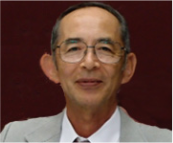Speakers

Susan Elmore Biosketch

Susan Elmore Biosketch
Dr. Elmore received her undergraduate and graduate degrees and her Doctorate of Veterinary Medicine from North Carolina State University and also completed her residency in anatomic pathology at NC State. She is boarded in anatomic pathology and toxicology and is a Fellow of the International Academy of Toxicologic Pathology. She has been with the NIEHS and the NTP since 2006 where she provides management and oversight of pathology peer review for NTP chemicals and is Group Leader for the Mouse Embryo Phenotyping Core. Her main areas of expertise include immunotoxicology, renal pathology, mouse embryology and mechanisms of cell death. She currently is a member of the INHAND Lymphoid System Working Group. She is the Editor-in-Chief of the Toxicologic Pathology Journal and has served as guest editor of special issues for a variety of other journals. Finally, she organizes the chairs the very popular annual NTP Satellite Symposium.

Dr. Jack R. Harkema

Dr. Jack R. Harkema

Dr. Takanori Harada

Dr. Takanori Harada
We had a sad story of organic mercury poisoning called “Minamata disease” in Minamata city, Kumamoto prefecture, Japan in the 1950s and 1960s. Minamata disease was first officially disclosed in 1956 to be caused by the release of industrial wastewater containing methylmercury (MeHg) from a chemical factory into Minamata Bay which was continued from1932 to 1968. At that time, Minamata Bay was heavily polluted by MeHg which was bioaccumulated in fish and shellfish in the bay. Minamata disease occurred in local residents living around the bay who ingested frequently the MeHg-contaminated seafood. It has been shown that MeHg in the seafood is almost completely absorbed from the gastrointestinal tract and is transported to various tissues through the blood vessels and mainly accumulated in the central nervous system (CNS), which causes neurological disorders. MeHg easily crosses the blood-brain barrier and placenta and is accumulated in the brain of fetuses more than mothers. The affected residents showed neurological symptoms characterized by sensory, visual and auditory disturbances, which were much severer in infants than adults. In consideration of these circumstances, our institute conducted 2-year oral chronic toxicity and carcinogenicity studies of MeHg chloride in rats and mice at dietary dose levels of 0, 0.4, 2, and 10 ppm to clarify the toxic and carcinogenic effects of MeHg on mammals. In the rat study, males and females in the high dose group showed a toxic peripheral sensory neuropathy characterized by loss of nerve cells in the spinal ganglion and nerve fiber degeneration in the spinal dorsal root, spinal dorsal funiculus and distal peripheral nerve, but there were no conspicuous histological changes in the cerebrum or cerebellum. The rats in the high dose group also exhibited toxic changes in the renal tubular cells. No carcinogenic evidence was seen in any organ/tissue in the rat study. In the mouse study, neurotoxic clinical signs characterized by posterior paralysis were noted in both sexes in the high dose group. The mice in the high dose group showed toxic encephalopathy accompanied by neuronal necrosis in the brain, toxic peripheral sensory neuropathy, and a higher incidence of chronic nephropathy. In addition, significant increases in renal tubular cell hyperplasia and neoplasia were noted only in male mice in the high dose group. These results indicate that there are considerable species/sex differences in toxic effects of MeHg on mammals which might be due to differences in metabolism. Human CNS would be more sensitive than other animal species. Minamata disease is a typical
environmental pollution disease resulting from the lack of environmental awareness in the course of giving priority to rapid economic growth in Japan after the World War II. This indicates that a higher priority should be given to the environmental pollution control for the future of all life on the earth.
Keyword: methylmercury, neurotoxic effects, renal tumor, species/sex difference

Wanda M. Haschek-Hock

Wanda M. Haschek-Hock
International Harmonization of Nomenclature and Diagnostic Criteria for Lesions (INHAND) Initiative for Toxicologic Pathology

Gabriele E A Biosketch

Gabriele E A Biosketch
Gabriele Pohlmeyer-Esch
Dr. Gabriele Pohlmeyer-Esch is a toxicological pathologist and head of the laboratory for clinical pathology within Preclinical Development at Boehringer Ingelheim Pharma in Biberach, Germany.
She graduated from Hannover Veterinary University (Germany) in 1988. She is a certified specialist in laboratory animal science and Diplomate of the European College of Veterinary Pathology.
Before joining Boehringer Ingelheim Pharma in 2016, she had occupied responsible positions in the field of laboratory animal pathology and toxicologic pathology both in the agrochemical and pharmaceutical industry, among which Bayer CropScience in France and Novartis Pharma in Switzerland. She also worked as an independent consultant in toxicologic pathology during more than a decade. She is an active member of several national and international professional societies and currently serves as honorary secretary of the European Society of Toxicologic Pathology (ESTP).
She has been the initiator and co-chair of three ESTP International Expert Workshops on the topic of “adversity”. The resulting published workshop results have been recognized internationally as guidance for toxicologists and toxicologic pathologists.
Adversity in Nonclinical Toxicology: The Do’s and Don’ts for Toxicologic Pathologists
The identification of adverse health effects on laboratory animals is one of the key factors in the development and risk/safety assessment of chemical entities and pharmaceuticals. Based on the presence or absence of adverse effects, a No-Observed-Adverse-Effect Level (NOAEL) may be determined for a given study. However, adversity decisions have often been made without clear and objective scientific explanations, potentially leading to different interpretations within or across regulatory authorities.
The international community of toxicologists and toxicologic pathologists has recognized the increasing need for guidance in this field. Therefore, besides other initiatives, two working groups with international experts were set up by the Society of Toxicologic Pathology (STP) and the European Society of Toxicologic Pathology (ESTP), respectively, and were partially conducted in parallel. Combining both, the goal of these working groups was to better define, characterize and communicate adversity in pathology and toxicology reports.
As most findings need the context of other study results in order to fully evaluate their biological significance, adversity calls should be made in the toxicology report at a minimum, and in the pathology report where possible. They should refer specifically to the test species used.
In the pathology part report, adversity decisions should be based on morphologic endpoints (most often at the organ level), because the functional consequences at the whole-animal level may not be specifically evaluated. A new definition of “adverse effect” was agreed upon, which allows to substantiate either an immediate loss of function or an impaired ability to further respond to a new harmful challenge.
A structured workflow is suggested, how to designate, further characterize and communicate adversity: “Determinants” (pathological nature of effect, lesion severity, effect constellation) allow to identify a test item-related effect as adverse. As a next step, further explanation and precision may be reached by a number of “Characteristics” (exacerbation of spontaneous change, direct vs. indirect effect, adaptive response, reversibility, extrapolation to longer-term or higher exposure, human relevance and Mode of Action).
Both working groups agreed that, while this structured approach offers significant guidance to toxicologists and pathologists, it appears that there is no one formula or method that can be applied to all adversity decisions.
References:
Kerlin R. et al. (2015): Scientific and Regulatory Policy Committee: Recommended (“best”) practices for determining, communicating, and using adverse effect data from nonclinical studies. Tox. Path. 44(2), 147 – 162
Palazzi X. et al. (2016): Characterizing “Adversity” of pathology findings in nonclinical toxicity studies: results from the 4th ESTP International Expert Workshop. Tox. Path. 44(6), 810 - 824

Douglas C. Wolf

Douglas C. Wolf
Douglas C. Wolf
Dr. Wolf graduated in 1981 from the University of Missouri with his D.V.M. and, after 6 years in clinical veterinary practice, he attended Purdue University where, in 1991, he completed his pathology residency and Ph.D in Veterinary Pathology. Doug was a staff scientist for 6 years at the Chemical Industry Institute of Toxicology (CIIT) where he studied chemical carcinogenesis. From 1997 until 2013 he held various positions with the U.S. Environmental Protection Agency. Initially, as a Principal Investigator at the National Health and Environmental Effects Research Laboratory (NHEERL), where he continued his work in carcinogenesis and molecular pathology. He has held several leadership roles at EPA as a Branch Chief in the Environmental Carcinogenesis Division, as Director of the Toxicology Assessment Division, as Assistant Laboratory Director in NHEERL and as Director of the Endocrine Disruptor Screening Program in the Office of Chemical Safety and Pollution Prevention. In November 2013 he joined Syngenta Crop Protection as lead for Toxicology and Health Sciences in North America which he held until June of 2017. Doug is currently a Senior Technical Leader within Toxicology and Health Sciences with the portfolio of globally advancing the science for safety assessment. Doug has authored or coauthored over 135 journal articles, book chapters, and technical reports and has presented his work at numerous national and international scientific meetings. In 2004 Dr. Wolf was elected a Fellow of the International Academy of Toxicologic Pathologists and in 2007 a Fellow of the Academy of Toxicological Sciences.
Abstract for the World Congress of Toxicologic Pathology, April 2018, Sao Paulo, Brasil, invited presentation.
The Role of the Toxicologic Pathologist in 21st Century Safety Assessment and Xenobiotic Research.
Douglas C. Wolf, D.V.M., Ph.D., FIATP, ATS
Syngenta Crop Protection, North Carolina, USA
Since the beginning of the second millennium there has been a push from many scientific and special interest communities to substantially change how we determine the safety of the many man-made and natural substances to which we are intentionally and accidently exposed. During the first decade of the 21st Century a number of proposals were published by government institutions and highly respected scientific organizations proposing a major move away from the use of live animals for safety and risk evaluation and a move towards non-animal test systems and computer models. We are nearing the end of the second decade of this new century and it is appropriate to take stock of our progress in this fundamental change in safety evaluation for human health protection. Significant progress has been made, however significant concerns are still expressed regarding the applicability and suitability of the many new methods, such as high throughput in vitro assays, that are now commonly used in xenobiotic evaluation. An important change has been the desire to eliminate the use of animals in safety assessment and research. Some see this as a very positive step forward but others question the validity of non-animal methods and still others may look upon these changes as a threat to their livelihood. The toxicologic pathologist is a highly trained medical professional, typically a veterinarian or physician, who has received additional training in the diagnosis and pathogenesis of disease including lesions that can be induced from exposure to xenobiotics. Much of a toxicologic pathologist’s training and role has been in evaluating the effects in fluids and tissues from laboratory animals after xenobiotic treatment. The role of the toxicologic pathologist has changed in recent years and continues to evolve, but the need for pathologists with adequate training and understanding of chemically-induced disease is even more necessary in the evaluation, interpretation and appropriate incorporation of these new strategies for assessing safety and risk.
Abstract for the World Congress of Toxicologic Pathology, April 2018, Sao Paulo, Brasil, invited presentation.
What Is So Special About the Endocrine System?
Douglas C. Wolf, D.V.M., Ph.D.; Sue Yi, Ph.D.
Syngenta Crop Protection, North Carolina, USA
The endocrine system is a network of glands and organs that produce, store, and secrete hormones. When functioning normally, the endocrine system works with all other systems to help maintain dynamic homeostasis. Some have asserted that the endocrine system is such a special system that the core concept of toxicology, the dose makes the poison, does not apply. This core concept was described in the first half of the 16th century by a Swiss physician and scientist. In the intervening 500 years of toxicology, we have learned much about the mechanisms of how xenobiotics can cause disease in all living creatures including humans. Mechanistic studies have allowed for mathematical descriptions of disease processes that include internal exposure concentration to a specific targeted receptor derived from the external dose and models of the entire biological process leading to an adverse outcome. This knowledge allows development of pathways maps called adverse outcome pathways with specifically identified key events. These key events can be tested through specific assays to aid in prediction of the potential for the occurrence of an adverse effect. None of these scientific advances have changed the fundamental medical precepts of how disease develops in the whole organism nor pharmacological principles that drive chemically-induced disease. While the endocrine system is integral to the overall function of the organism, this is true for all other organ systems, including the circulatory, digestive, respiratory systems; and therefore, there is nothing fundamentally different nor unique about how the pathogenesis of disease occurs associated with altered endocrine activity compared to every other system in the body.

Lindsay Tomlinson

Lindsay Tomlinson
Lindsay Tomlinson
Lindsay Tomlinson, DVM, DVSc, graduated from the Ontario Veterinary College in Guelph, Ontario, Canada in 1995 and 1999, for her respective degrees. Lindsay researched and defended her thesis on chlamydial disease in sheep in the DVSc program. She spent two years as a Visiting Instructor at North Carolina State University and obtained board certification with the American College of Veterinary Pathologists (ACVP) in anatomic pathology during that time. Lindsay worked as a Toxicologic Pathologist in the Anatomic and Clinical Pathology Departments and as a Project Representative for Drug Safety at Bristol-Myers Squibb (BMS) in New Brunswick, NJ, for just under 10 years. She earned board certification with the ACVP in clinical pathology and with the American Board of Toxicologists (ABT) in toxicology during her time at BMS. Her current position is Global Pathology Leader for a group of anatomic and clinical pathologists at Pfizer Inc. in Cambridge, MA. Lindsay has had a leadership role in the pathology of discovery and developmental drug safety at Pfizer for over 7 years. She is the Project Representative for Drug Safety on several projects and maintains strong ties to the clinical pathology community through work on the Executive Board of the American Society for Veterinary Clinical Pathology (ASVCP).
Biomarkers of Adversity
There have been significant working group efforts initiated by the Society of Toxicologic Pathology (STP) and the European Society of Toxicologic Pathology (ESTP) to provide recommendations on how to make consistent interpretations on the adversity of nonclinical test article-related effects, how to determine a ‘‘no observed adverse effect level’’ (NOAEL) in nonclinical toxicity studies, and to align the international community on the determination of nonclinical adversity. Clinical pathology principles of assessing adversity were addressed at a high level in both of the manuscripts resulting from these efforts. However, the Regulatory Affairs Committee of the American Society for Veterinary Clinical Pathology (ASVCP) expanded on clinical pathology concepts of assessing adversity in the manuscript, Principles for Assessing Adversity in Toxicologic Clinical Pathology (Ramaiah et al, 2017; Toxicol Pathol). High level key points included: 1) Consideration of pathogenesis is considered very important in clinical pathology data interpretation because both adverse and nonadverse processes may result in a similar alteration in various endpoints; 2) Rapidity of onset of the finding and persistence of a finding with repeated dosing must be considered because they can impact the adversity call; 3) Clinical pathology changes known to be related to adverse anatomic pathology findings or specific adverse clinical outcomes should be considered adverse in light of the entire set of data; and 4) Not all reported endpoints require an adversity call (eg. calculated endpoints such as A:G ratio). Using the information provided in all three of these manuscripts, two cases will be reviewed. The first will explore a case with clinical pathology changes associated with clinical alterations affecting female reproduction and anatomic pathology findings in the reproductive tract. The second case will evaluate the clinical pathology findings associated with altered hematopoiesis and lymphopoiesis. Both cases are intended to explain how clinical pathology findings fit into the overall adversity calls in line with the recommendations from STP, ESTP and ASVCP.
References:
Ramaiah L. et al. (2017): Principles for Assessing Adversity in Toxicologic Clinical Pathology. Tox. Path. 45(2), 260 – 266.

Prof John R Foster

Prof John R Foster
Prof John R Foster – A Biography
John’s first role in Toxicology was in 1978 when he then joined the British Industrial Biological Research Association (BIBRA), in the UK, having successfully completed a PhD in liver pathology from University College, Cardiff in the UK. He left BIBRA in 1983 to join ICI Central Toxicology Laboratory in Cheshire, United Kingdom as a pathologist where he stayed until 2000. He worked for AstraZeneca Pharmaceuticals from 2001-2013 and was acting Head of Pathology when he left. He became a member of the UK’s Royal College of Pathologists (RCPath) in 1988, and a Fellow in 1997, and was Chair of the Panel of Examiners for the Toxicology Specialty of the RCPath from 2006-2012.
He was President of the British Society of Toxicological Pathologists (BSTP) from 2002-2004, became an Honorary Fellow of the British Society of Toxicology in 2008, and was made an Emeritus Professor in the Faculty of Health and Medical Sciences at the University of Surrey in 2010. He was elected an Honorary Fellow of the BSTP and the Latin American Society of Toxicologic Pathology in the same year.
He is an expert panel member of the UK Food Standards Agency’s Committee on Toxicity of Chemicals in Food and the Environment, has published over 150 research papers, review articles and book chapters in toxicological pathology, and was the Editor in Chief of the journal, Toxicologic Pathology, from 2008-2013. He is also Vice President of the International Academy of Toxicologic Pathologists.
He is currently a consultant pathologist working for his own company, ToxPath Sciences Ltd, and within a group of toxicologists for Regulatory Science Associates, both of which he joined in January 2014.
J R Foster
January 2018
The Application of Histopathology in Defining Adversity
The characterization of organ and tissue changes in toxicity studies into adverse or non-adverse is a fundamental, and key endpoint, made during the conduct of non-clinical toxicity studies. This decision defines the setting of NOAELs which are subsequently used in a regulatory context to classify industrial and agrochemicals for use in Europe, or in setting acceptable starting doses for subsequent drug trials in humans. The objective setting of NOAELs can hence permit novel chemical entities to be developed and marketed, or prevent entirely the future use of a new agrochemical. Up until the turn of the year 2000, decisions on what was adverse, and hence the setting of NOAELs, were largely based upon arguments of changes being adaptive and reversible, but because of feedback from regulatory agencies challenging these regulatory calls, successive initiatives from ECETOC, and more latterly by the ESTP and STP, have attempted to place more objective, and scientifically more justifiable arguments on which to assign adversity, and support the definition of NOAELs from laboratory animal toxicity studies.
Histopathology, together with organ weight changes, is commonly the most sensitive endpoint used in determining NOAELs, with the liver being the most commonly affected organ. This presentation will involve the discussion of a series of case studies of liver hypertrophy and necrosis, and will include a discussion of the relative importance of histopathology severity gradings, in the use of the terms such as “adaptive”, and in the demonstration of reversibility, as objective and defensible in the definition of non-adversity. As a second example, nasal toxicity I rodents, due to exposure to irritant chemicals, will also be presented and contrasted with the liver examples. For both the liver and nasal case studies, the importance of study duration will be emphasized as a way of testing the validity of NOAELs, set in acute studies, for subsequent pathology developing following longer term, and lifetime carcinogenicity, studies.
Using the selected case studies, this presentation will advocate the use of scientifically based, and experimentally supported, approaches to assessing adversity in terms of tissue and organ changes, with the object of setting NOAELs for regulatory purposes
References:
ECETOC (2002). Recognition of, and differentiation between, adverse and non-adverse effects in toxicology studies. ECETOC Technical Report No. 85. ISSN-0773-6347-85, Brussels 2002.
Hall, A.P. et al (2012). Liver Hypertrophy: A Review of Adaptive (Adverse and Non-adverse) Changes—Conclusions from the 3rd International ESTP Expert Workshop? Toxicol. Pathol. 40: 971-994.
Lewis, R.W., Billington, R., Debryune, E., Gamer, A., Lang, B. and Carpanini, F. (2002). Recognition of adverse and nonadverse effects in toxicity studies. Toxicol Pathol. 30; 66-74.
Maronpot, R.R. et al (2010). Hepatic Enzyme Induction: Histopathology. Toxicol. Pathol. 38: 776-795.

